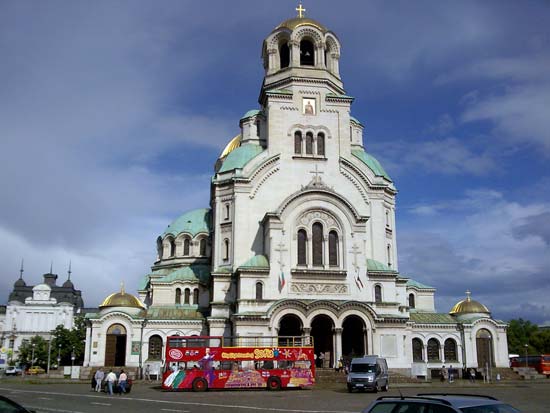Despite various Byzantine ruins and mosques attesting to a long, colourful history, many of Sofia's historic grandeur has been lost. Some of its most impressive architecture post-dates Bulgaria's Liberation of 1878. Wide tree-lined boulevards house numerous turn-of-the-century stuccoed buildings. Sofia's protective fortress walls for 12 centuries, straddle the city centres where remnants of the original Serdica settlement (2nd Century) still lie. Major landmarks include the St George Rotunda, part of a large archaeological complex with rare Roman architectural features; the St Sofia Basilica which inspired the city's coat of arms; the Alexandar Nevski Cathedral, whose magnificent icons and frescoes are world famous; and the Boyana Church on Sofia's outskirts - a listed UNESCO building - a fine example of Medieval architecture with unique wall paintings.
Other tourist attractions include: the Church of St Nedelya, the Banya Bashi Mosque (16th century) and nearby Turkish baths, the Hall covered market and clock tower Synagogue, the National History Museum, the St Petka Saamardzhiiska Church, the Russian Church, the Alexander Battenberg Square, the flea market, antique shops and cafes around the Kristal Square, the tree-lined Alexander Nevski Square, named after its famous Cathedral, and the international art collection housed in the St. St. Cyril and Methodius Foundation.







